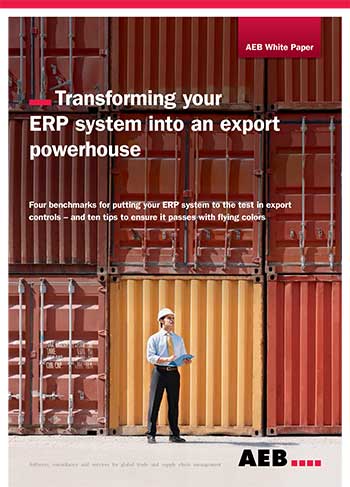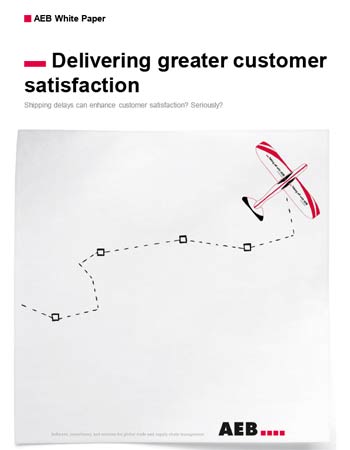The Cold Chain Market: How to Move your Business into the Next Decade


Over the next five years the cold chain market is expected to grow at a compound annual growth rate of 11%, boosted by the expansion of international trade and the introduction of innovative new operating models that are being employed across many industries, from supermarkets through to the pharmaceutical industry.
As an essential piece of the supply chain puzzle, cold chain involves the storage and transportation of temperature sensitive or perishable products. Having the right tools for the job in these often-harsh environments can be the difference between a successful business and an unsuccessful one, due to the need to be as efficient as possible to avoid wastage or spoilage.
Closer to home growth will come from exploiting the market on the doorstep, by reinventing what the consumer already knows and repackaging it for the modern way of living. Sainsbury’s spent millions in the first few months of 2015 promoting its Love your Freezer campaign. The campaign is geared at changing perception, not only about how convenient and healthy frozen foods can be, but also how friendly it is to the average consumer’s food bill, given the reduction it makes to waste.
Overseas expansion will be the big opportunity as the buoyant market is pushed by demand from developing nations such as India and China. With such a rising demand for specific temperature controls relating to food and healthcare products, it’s clear that now is the time to reassess your business and pinpoint where productivity gains can be made to capitalise on the increased demand.
The evolution of mobile data capture technology
In a cold storage environment, making productivity gains, creating more efficient operations and managing costs can all be addressed by a thorough review of the data capture technology in use.
The bottom line is that the effectiveness and reliability of a mobile device will fall along with the temperature, unless a device is specifically designed for the conditions it is expected to perform in.
The list of problems that mobile devices must face in a cold storage environment is long, and can include: LCD screen fogging up, batteries struggling to cope with the cold, frost obscuring screens, frost covering a barcode scanner’s optical port, reduction in drop rating/IP, reduced display refresh rates and ice on the keyboard.
When a device is frequently taken in and out of cold areas, the temperature can affect almost all of its components. However, the end result is the same – reduced user productivity and if you are not careful employee engagement drops too.
The good news is that over the last five years there has been an abundance of investment in technology research and innovation - today’s modern devices have been enhanced to maintain efficiency in temperature-controlled environments like never before.
The changes can often be simple, such as adding big buttons to rugged handheld terminals that can be felt when using thick gloves, through to more complex improvements, such as internal heat sources and seals designed to prevent condensation and battery draining due to the cold temperature. These innovations are now commonplace and can make a huge difference to cold chain operations.
It’s also vital to consider your operational model today and where you think it will be in three or five years time when planning any investment in new devices. If you want to gain a bigger slice of the cold chain market, then you have to be prepared to grow with it. As well as the technical features of the devices, think of the practical implications too. Will the warehouse grow and if so will your people do more miles moving around the warehouse, and will they carry the device or will it need to be mounted to a vehicle? How will the devices cope with wear and tear, especially as demand increases? How will they cope with rapid temperature change if they are taken into different environments? The technology exists to manage these scenarios, but the trick is to determine the fewest variations in order to optimise the investment.
There may also be an operating system issue that needs to be addressed, depending on your current situation. Will software automatically update so that you have the latest version, how can you ensure all of your employees are using the same version? Do you want to use a system that your employees are already familiar with? How will this impact training? Integrating new technology into a fully functioning, and in many cases an increasingly busy, cold store environment is a challenge. But making the right decisions for your business can pave the way for a successful future.
A logistics expert who understands your business challenges and can help you refine and establish your operational and strategic objectives and make the right choices regarding the devices needed. They can also help with deployment and with any training that may be needed to work with specialist devices.
[email_signup:signup_form]Mobile technology on the road
As well as ensuring operations run smoothly inside the warehouse, it’s outside on the road where many new technologies can help to optimise a cold chain business.
All too often businesses falter when the pressure is on, and the link that usually breaks first is the one between the warehouse and the lorry. In a cold store environment, mistakes made while loading a vehicle can put standards at risk and slow down the whole operation. When dealing with goods that must be kept at a certain temperature to preserve them, or for hygiene and safety reasons, there can be no weak link or the whole operation will fall down.
With online grocery expected to double to £1.1 billion by 2018, fuelled by the rise of click and collect services, it’s clear that success will depend on slick stock management and tight turnaround times.
Devices used in vehicles and lifts will also be susceptible to similar problems faced in the warehouse. Although similar solutions are also available, it’s another link in the chain that needs to be understood and dealt with properly if gains in productivity are to be made.
The management system
To cope with the expansion expected over the next five years, cold storage operators will need to consider the demands on infrastructure and how their warehouse management system can support the mobile devices available.
As demand increases, along with the pressure on maintaining temperature, a system that offers a real-time view of inventory and orders can allow warehouse managers to be confident in the ability of their business to deliver - and feel assured when taking on new contracts to grow their business.
Giving employees the tools to do their job, backed up by a solid warehouse management system, will not only boost productivity and efficiency but can also work wonders for morale too.
At an early stage, those involved in cold chain should map out the technology they require to capitalise on the expected growth – and create a roadmap to make it happen. It’s easy to think it will be complex to change technology, and indeed it can be if you are replacing outmoded technology, but with the support of a logistics expert it can be a smooth process. A good logistics partner will look at the situation as a whole and design a solution that can be phased-in according to businesses readiness, finances and capability
The ingredients for success
Any logistics company involved in cold chain will inevitably look at the expected growth in the industry and consider the changes it needs to make to take a slice of the market. The truth is that many more issues will apply to each individual business than can be listed here. Ultimately, it comes down to one central theme – what is the opportunity and what will it mean for our bottom line if we do nothing, something or change completely?
Answering this will drive the change that’s needed and open up further opportunities in the market – or even the opportunity to serve existing customers in a more efficient manner.
Identifying how much ‘stretch’ there is in the existing model is one of the first tasks that should be completed. By mapping out your ambition, and then by doing a gap analysis of what you need compared to what you have, you’ll be able to establish the right path to go down.
You’ll also be able to assess the cost versus the opportunity and the roll out plan - a phased implementation that uses a combination of existing technology and new technology, or a complete replacement. The assessment should also help you see where you’ll achieve the biggest gains and how you should prioritise your implementation.
It is vital the strategy is well planned out. This can be an enormous undertaking so it’s very worthwhile to work closely with a technology specialist, who can help assess the gap you need to close today and help you anticipate the future.
A good partner will use this gap analysis to guide a logistics business to the solution that can maximise the opportunities the market presents today and leave the door open for managing the new opportunities that developments in technology are likely to bring about.
Cold storage and logistics is a dynamic industry and the potential for growth is great. A strategy underpinned by technology is the best way to exploit it and turn opportunity into profit.
Want more like this?
Want more like this?
Insight delivered to your inbox
Keep up to date with our free email. Hand picked whitepapers and posts from our blog, as well as exclusive videos and webinar invitations keep our Users one step ahead.
By clicking 'SIGN UP', you agree to our Terms of Use and Privacy Policy


By clicking 'SIGN UP', you agree to our Terms of Use and Privacy Policy
Other content you may be interested in
Categories

Want more like this?


Want more like this?
Insight delivered to your inbox
Keep up to date with our free email. Hand picked whitepapers and posts from our blog, as well as exclusive videos and webinar invitations keep our Users one step ahead.
By clicking 'SIGN UP', you agree to our Terms of Use and Privacy Policy









